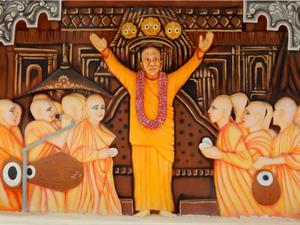
PUMPA - SMART LEARNING
எங்கள் ஆசிரியர்களுடன் 1-ஆன்-1 ஆலோசனை நேரத்தைப் பெறுங்கள். டாப்பர் ஆவதற்கு நாங்கள் பயிற்சி அளிப்போம்
Book Free DemoIntroduction
Other contemporary religions like Buddhism, Jainism, Sikh etc., faced a high degree of persecution under the dominant Islamic rulers. These persecutions made way for the awakening of new religious orders which went on to make a Cultural Revolution in the Medieval Society.
One of the many religious orders that rose to prominence both in South and North India was the Bhakti Movement which had its degree of impact on its followers, especially among the Hindu people.
The Rise of Bhakti Movement:
The Origin of the Bhakti movement has its reasons, as the Social evils prevalent among the Hindus during the Islamic rule like Polygamy, dogmatic thoughts, irrelevant rituals and the rigid caste system made people think about a panacea.
The society was also plagued by Polytheism, Untouchability and Casteism, which further worsened the existence of people and led to ideological wars.
Bhakti: The word Bhakti has been derived from the Sanskrit root word “Bhaja” which means “to Utter”, which indirectly means to utter the emotion of love with honour.
To relieve the people from the clutches of this agony, poets and saints began to compose songs that were centred around a single concept, “devotion to god” or Bhakti.
It also firmly emphasized the omnipresence of God and one should search the almighty within self to attain the path of Salvation.
It also firmly emphasized the omnipresence of God and one should search the almighty within self to attain the path of Salvation.
Bhagavad Gita: This word means the “Song of God” is an important religious text of Hinduism, which was originally part of the epic “Mahabharata”. This text inspired the Bhakti Movement.
The text of Bhagavad Gita propounded the principles that have to be followed to attain salvation. It speaks about three tenets that lays the path to an eternal journey.

Initial Phase of the Bhakti Movement:
The Bhakti movement in Tamil Nadu witnessed its shoots during the Sangam Age and the age of Pallava Kings. During the \(6^t\)\(^h\)-\(7^t\)\(^h\) Century the Bhakti saints of Tamil Nadu spread their ideals of love towards God.

Bhakti movement
They sang devotional songs and composed poems that spread the ideals of the Bhakti movement among the people. It also brought a sense of equality among the society as the saints from all classes and castes were included.
Sufism also voiced the same tenets, which strongly believed in the concept of meditation and devotion to realise the presence of the god.